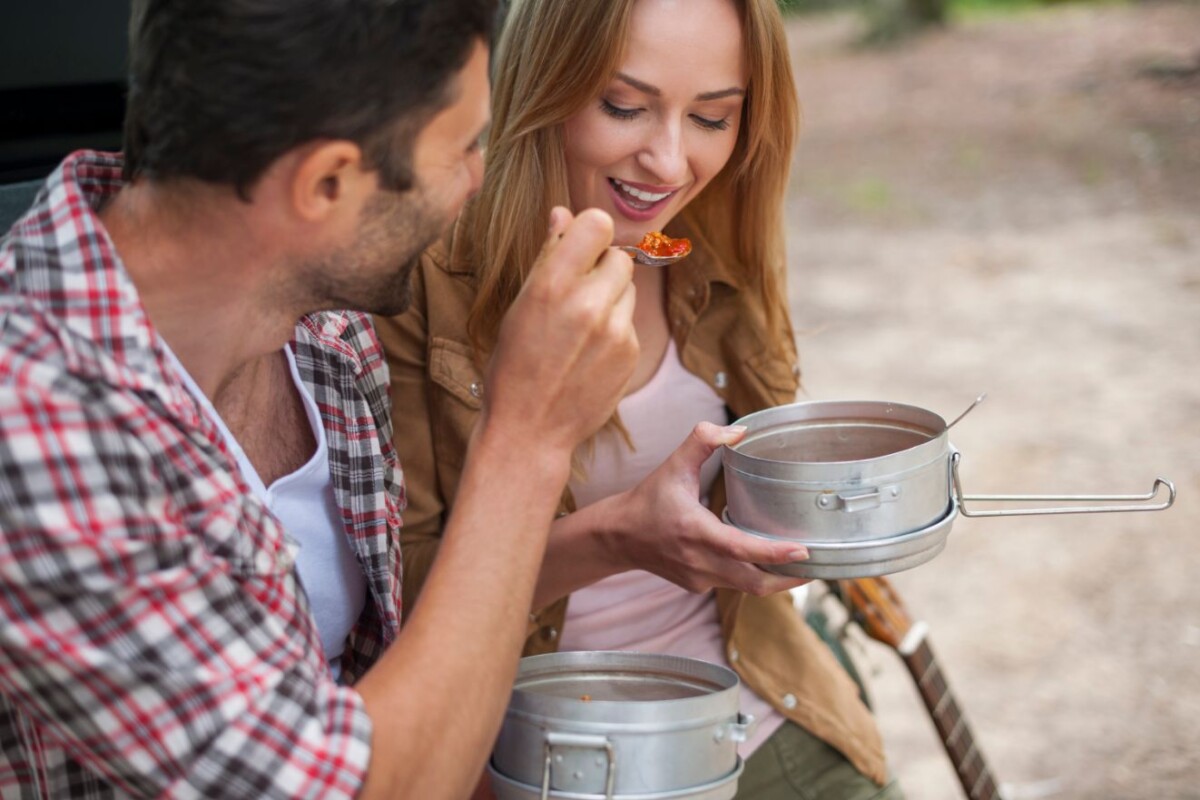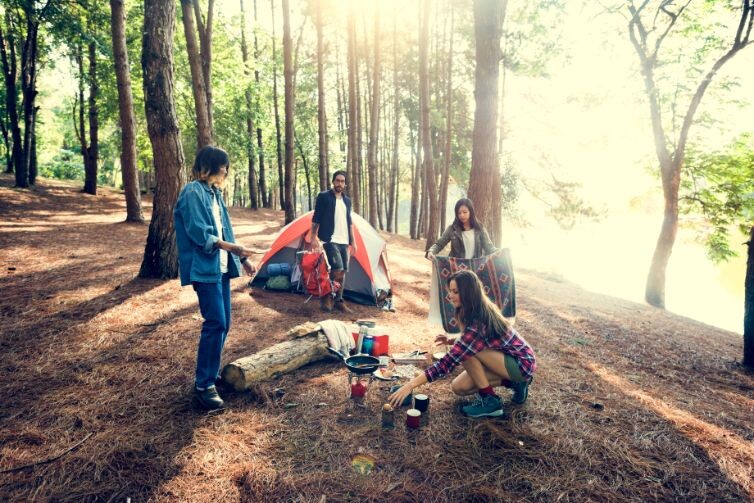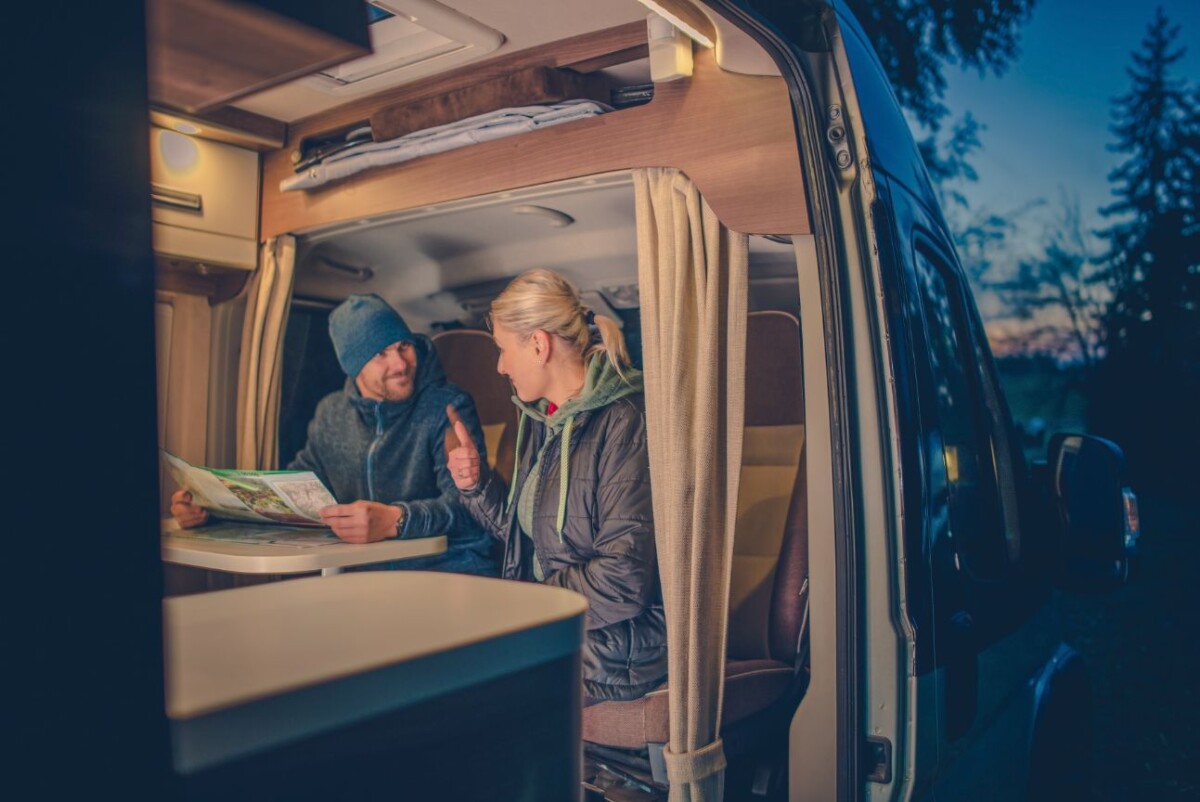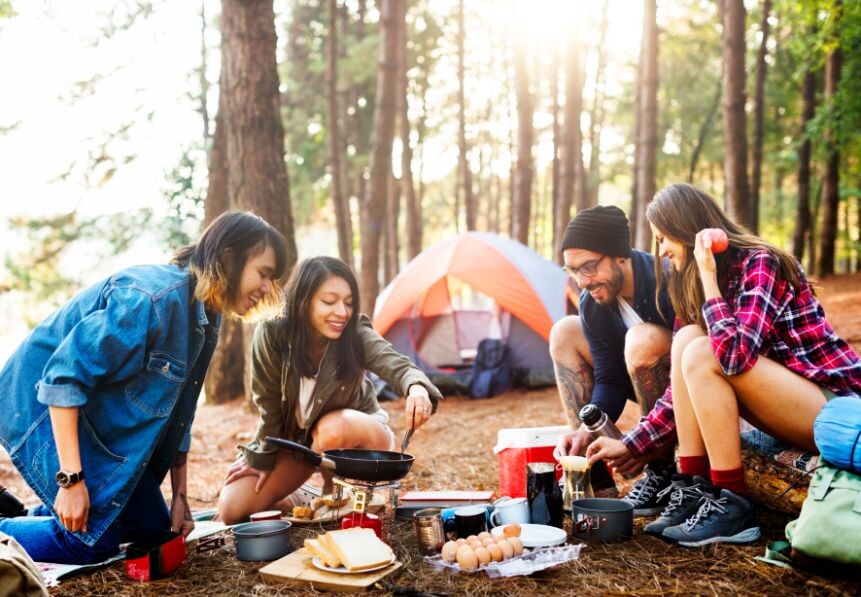If you’re a beginner camper, you may have discovered that a camping trip is a perfect way to get away from the stress of the daily grind and get in tune with the natural world. You may have also noticed that a meal of cheap hot dogs roasted on a stick with s’mores for dessert is as good as it gets. Anything more would interrupt your ethereal escape with a new set of headaches. But with these 6 cooking tips to make you feel at home, you can take the outdoor food experience to another level.
1. Food Safety First
Keep your food locked up at the campsite. Animals, particularly bears will rummage through your food. That’s not good for you or the wildlife.
Either keep it in your vehicle or a lockbox. Many campgrounds offer bear boxes as an amenity. The goal is to keep bears off the campgrounds by keeping attractive smells out of range. So in addition to food items, use it to store pans, sodas, soaps, and detergents.
Watch how you store food to avoid illnesses. Always store raw meat with ice right up until it is time to grill. When food is between 40 and 140 degrees, bacteria can grow. Never leave food out in hot weather for longer than an hour. Put leftovers away within two hours, and always use sanitary wipes before preparing food and eating.
2 . Ditch The Cooler For A Camping Fridge

While coolers will keep your food at a safe temperature, it takes a lot of pre-planning to make the most out of them. You have to decide where to buy ice, make your own freeze bottles of water, or find other tricks to use. You may have to plan meals ahead of time and pre-freeze foods for the cooler as well.
On the other hand, a portable camping fridge that can be hooked to your car will be like taking a piece of your kitchen on the road with you. They run on propane, 12 volts, or a combination of both. Keep frozen foods at the base and store milk, juice, and other items that need to be kept chilled on the top.
3. Opt For A Camping Stove ( But Keep the Campfire)
When it comes to fun in the outdoors, an open campfire is classic. But it can be difficult to cook over open flames. You don’t have control over the heat as you do on a stove top. So, save the open fire for roasting marshmallows after dark and invest in a camping stove.
A two-burner propane stove is perfect for preparing campsite meals using a cast-iron Dutch oven or skillet. With the press of a button, you’re all set to cook, and you don’t have to worry about damp conditions or fire hazards in dry weather.
4. Choose Cast Iron Cookware

Unless you are backpacking, cast iron cookware is the way to go. It’s durable, lasts forever, and keeps food warm longer. Outdoorsmen have been using it to prepare hearty meals for a long time. Three essential cast iron pieces will allow you to cook just about anything. Use a pan for frying eggs and bacon, a Dutch oven for stews, soups, and baking bread, and a pie iron for grilled sandwiches.
Don’t forget accessories like a wooden spoon, spatula, a sharp knife, and a meat fork. Consider metal skewers, too. They are light to pack and channel heat into meat faster for more thorough cooking.
If you like to hike and camp out in the backcountry, a small titanium or aluminum pot or pan will suffice. They are lightweight for carrying and can double as serving plates.
5. Prep for Outdoor Meals at Home
You’ll save a good deal of time and avoid frustration if you engage in a little prep work at home. Dicing onions and peppers, and chopping veggies are much easier to do at home in your own kitchen. Bag them up and carry them to use in soups, stews, and stir-fries. Freezer Ziplocs can also be used to freeze soups and rice at home. Simply reheat the bag in boiling water at the campsite when it’s time to eat. If you’re planning to grill kebabs, you can chop pieces of meat and veggies in advance.
You can also use colorful plastic straws to carry spices for your meals and avoid having to pack half your spice cabinet. Use a lighter to seal one end, fill it with spice, and then seal the other end. Label them or use a color-coded system to distinguish between spices. Then, just snip the straw open when you’re ready to cook at the campsite.
Another convenient hack is to store whatever you can in squeeze bottles. This includes items like pancake batter, oils, dressings, condiments, and scrambled eggs. If items get cold and congeal, heat them up in a pan of hot water.
Of course, you can also bring your fishing rod if you are near a lake or river and just catch your own dinner. It is a lot simpler to cook a fish on a grill over a fire. All you need is some aluminum foil and salt and pepper!
6. Make Clean-up Easier

There are a few ways to make cleaning up after cooking easier and faster. For one, foil meal packets are easy to fix, hearty, and easy to clean up after. Simply toss in your pre-cut meat and veggies in a foil packet of double thickness. Beef, chicken, sausages, carrots, potatoes, peppers—the combinations are almost endless. Slather the meat and veggies with butter and spices, fold, and toss on the grill.
The packet serves as both your cooking vessel and dish, so there is virtually no clean-up, and aluminum foil over the grill grate will mean less greasy grilling. Aluminum foil can also be used to roast unhusked corn and root veggies such as sweet potatoes. Get fancy and heat up a foil packet of raclette, brie, or other tasty cheese to make a fondue-style dip for veggies.
Use a thin layer of dish soap to coat the exterior of your cast-iron cookware before cooking. This helps with clean-up by keeping food from sticking to the outside of the pots and pans. While you eat, go ahead and heat up water for cleaning. The water will be ready to use when you’ve finished with your meal. You can read more camping ideas in this article from Proper Good.

